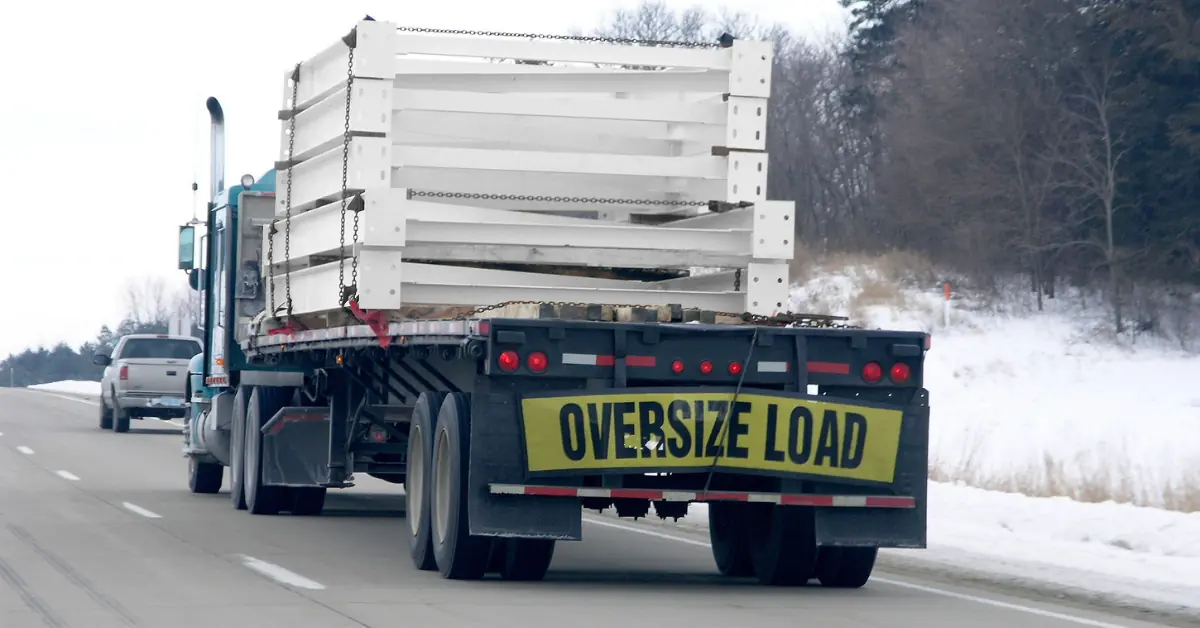Everything You Need to Know About Heavy Haul Transport for Oversized Loads in 2024
What Is Heavy Haul Transport?
Definition and Examples of Oversized Loads
Heavy haul transport refers to the movement of oversized loads that exceed the usual size and weight limitations for transport vehicles. Examples include industrial generators, wind turbines, construction cranes, and other large machinery or equipment. These loads require specialized trailers, equipment, and planning to ensure safe and efficient transport.
Key Equipment Used in Heavy Haul
For oversized loads, companies use specialized equipment like flatbed trailers, lowboys, and extendable trailers. In addition to trailers, heavy-duty trucks with higher horsepower are needed to haul these massive loads. Other equipment includes pilot cars that accompany the trucks, ensuring safe passage through busy or restricted areas.
Planning and Execution of Heavy Haul Transport
Route Planning and Importance of Logistics
When transporting oversized loads, route planning is critical. The logistics team must identify the safest and most efficient routes, taking into account bridge heights, road weight restrictions, and other factors that could affect the transport. This includes detailed mapping and coordination with local authorities to ensure the smooth passage of oversized loads.
Necessary Permits and Legal Considerations
Transporting heavy haul loads requires obtaining various permits. These permits vary by state and region, depending on the size, weight, and type of cargo. Failure to secure the appropriate permits can lead to penalties, delays, and safety hazards. Companies must also be aware of regulations from the Federal Motor Carrier Safety Administration (FMCSA) to stay compliant.
Case Study: A Successful Oversized Load Transport
In 2020, a heavy haul transport company successfully moved a 300-ton industrial generator across the country. The company utilized route planning software, worked closely with authorities to obtain the necessary permits, and provided continuous real-time tracking for the client. Despite a few challenges, the transport was completed on time and within budget.
Challenges and Solutions in Heavy Haul Transport
Common Challenges
Some of the most frequent challenges in heavy haul transport include poor weather conditions, which can delay or damage shipments, and route restrictions that limit where and when the load can travel. Road closures or construction can also add complications to the logistics process.
Technological and Logistical Solutions
Today’s heavy haul transport industry relies on advanced technology to overcome these challenges. GPS tracking, route optimization software, and real-time data updates help ensure that the shipment is on time and safe. Additionally, improved communication with local authorities and construction crews ensures that road closures and restrictions are anticipated in advance.
Safety Measures for Heavy Haul Transport
Safety Protocols for Transport and Loading/Unloading
Safety is a top priority in heavy haul transport, and strict protocols are in place to protect both the cargo and the public. Special care is taken during loading and unloading, with operators using cranes, forklifts, and specialized equipment to secure the load. Once on the road, pilot cars, and safety escorts ensure a smooth journey.
Training and Certifications for Operators
Operators handling oversized loads must be well-trained and certified. Certifications from organizations like the Specialized Carriers & Rigging Association ensure that operators are knowledgeable about safety protocols, equipment handling, and regulations specific to heavy haul transport.
Cost Factors in Heavy Haul Transport
Pricing Models and Factors Affecting Costs
Heavy haul transport is generally more expensive than standard shipping due to the specialized equipment and planning required. The cost of transporting oversized loads depends on several factors, including distance, the type of load, permits needed, and additional services like pilot cars or escorts.
Ways to Optimize and Reduce Transportation Costs
Companies can reduce costs by optimizing their route planning, consolidating shipments when possible, and working with experienced heavy haul providers who understand the legal and logistical landscape.
Conclusion
Heavy haul transport is a complex but vital service in the logistics industry, particularly for sectors like construction and energy. Proper planning, specialized equipment, and safety protocols ensure the efficient transport of oversized loads. As the industry evolves, new technologies and better safety measures will continue to shape the future of heavy haul transport.
FAQ Section
- What licenses are required for heavy haul transport?
Drivers need special certifications and must adhere to FMCSA regulations, depending on the cargo and state laws. - How do you ensure safety during oversized load transport?
By following strict safety protocols, using pilot cars, and working with certified operators trained in heavy haul safety procedures. - What are the penalties for non-compliance with transport regulations?
Non-compliance can lead to fines, delays, or the suspension of transport operations. Staying updated with FMCSA and state-specific regulations is essential. - How are oversized loads loaded and unloaded?
Specialized equipment like cranes and forklifts are used, and the process is overseen by trained operators to ensure safety. - How much does heavy haul transport cost?
Costs vary depending on the load’s size, distance, and complexity of the transport. Additional services, like pilot cars, can also affect pricing.





